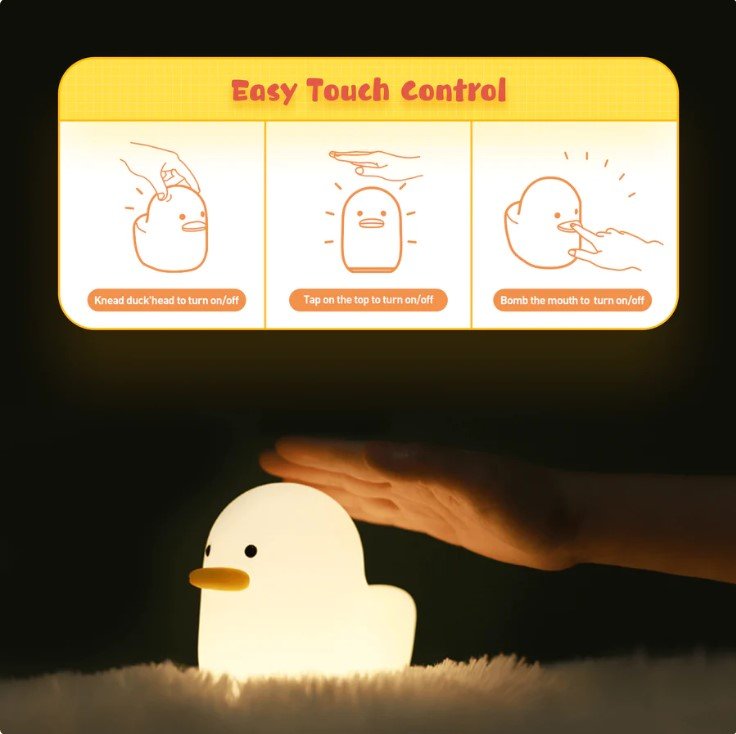A quick Google search for "baby night light" yields over a billion results, indicating its popularity. When it comes to late night diaper changes and feedings, many parents consider a night light to be an essential item. However, other parents feel that there is no place for a nightlight in the baby's room. So, why the discrepancy? Should Babies Sleep With Night Lights On?
Why Do People Utilize Baby Night Lights?
The topic of whether or not to use a baby night light is perhaps one of the most controversial topics when it comes to parenting.
Caregivers who love nightlights can't stop praising them. Often, caregivers choose night lights for a baby's room for a number of reasons:
- The light from the night light can soothe children who are afraid of the dark. Night light helps prevent tripping and tripping during late night feedings or diaper changes
- Light can create a more welcoming environment for your baby, which can be soothing during separation anxiety
- Soft light makes it easier to check on sleeping baby without having to turn on bright, harsh lights
What Night Light Colors Help Babies Sleep?
Amber and red are the best colored night lights for newborns and babies.Since they have longer wavelengths than other colors, they are less likely to disrupt your baby's natural sleep cycle. Blue light, on the other hand, has been shown to have a "high alertness" effect. That's because when detected by the eyes, it signals to the brain that it's daytime by suppressing production of the sleep hormone melatonin.
Melatonin is a hormone that helps regulate the body's sleep cycle. Exposure to blue light at bedtime can disrupt this cycle, causing your baby to stay awake longer and may have trouble falling asleep.
When choosing a night light for your baby's room, be sure to choose one with amber or red bulbs. This will help ensure your baby's circadian rhythm is not disrupted and encourage them to fall asleep faster and stay asleep longer.
When choosing a night light, be sure to choose something small and unobtrusive. This will ensure that it doesn't overwhelm your baby's room, nor is it too bright.
Thankfully, these warm, subtle tones won't keep your baby awake when you're spending a night in the nursery or playroom. Dim lights provide enough illumination to move around the room safely. It also protects against the dark, especially if your baby is afraid of the dark or has separation anxiety.

Which night light colors don't help babies sleep?
While amber and red are the best night light colors for babies, white, purple and blue should be avoided. These colors have much shorter wavelengths than amber and red, which means they are more likely to disrupt your baby's natural circadian rhythms.
White light is particularly harsh on the eyes and can make it difficult for babies to settle down and fall asleep. Purple light can be beautiful and aesthetically pleasing, but it can also be too harsh on your baby's eyes.
Blue light should also be avoided as it can increase alertness and make it difficult for your child to fall asleep. In addition to light bulbs and ambient sunlight, digital devices such as TVs, smartphones, tablets or computers also emit blue light. Excessive exposure to blue light from these devices has been linked to eye strain, headaches and fatigue, and may affect your baby's sleep, so they should be avoided at bedtime.
We also recommend against using tech as a night light in your baby's room. In fact, there should be no TV, tablet, computer or smartphone in the bedroom at all. Instead, use amber or red night lights, which have been shown to calm and promote better sleep.
Amber and red are the best night light colors for babies
When it comes to night lights, amber and red are the best colors for newborns and babies. Not only do these two colors have longer wavelengths, meaning they won't disrupt your baby's circadian rhythm, but they also have a host of other benefits.
Baby's amber and red lights mimic the colors of the evening sky, allowing them to drift off into dreamland without any distractions. They're also known for their muscle-relaxing effects, which can be especially helpful for babies who are restless at night.
Plus, research shows red light can reduce sleep inertia, the drowsy feeling you get when you just wake up. This means your baby can wake up feeling rested and energized in the morning.




Leave a comment
All comments are moderated before being published.
This site is protected by hCaptcha and the hCaptcha Privacy Policy and Terms of Service apply.